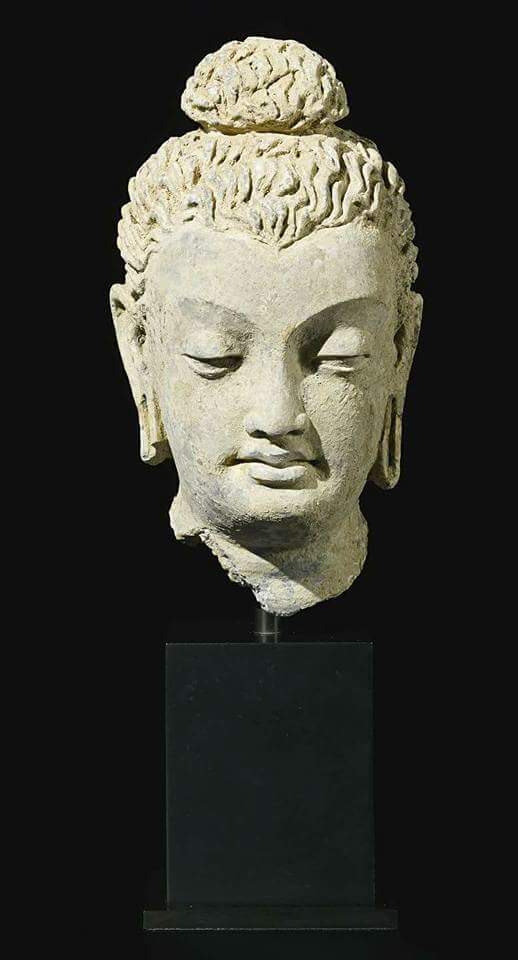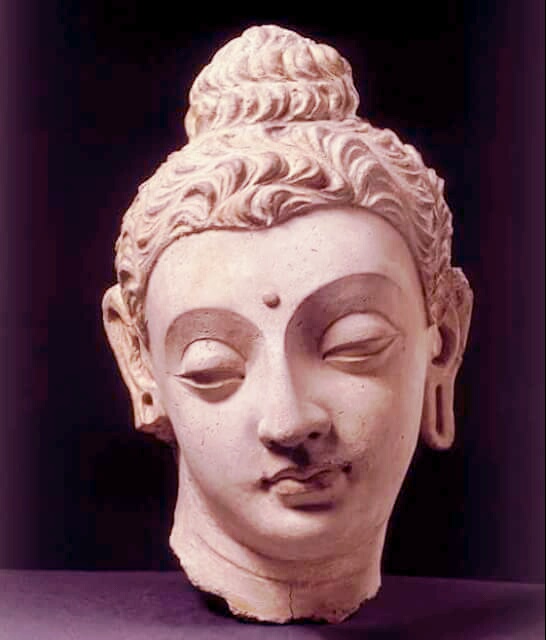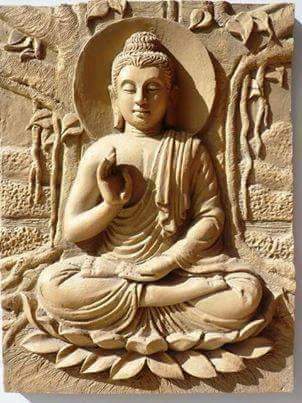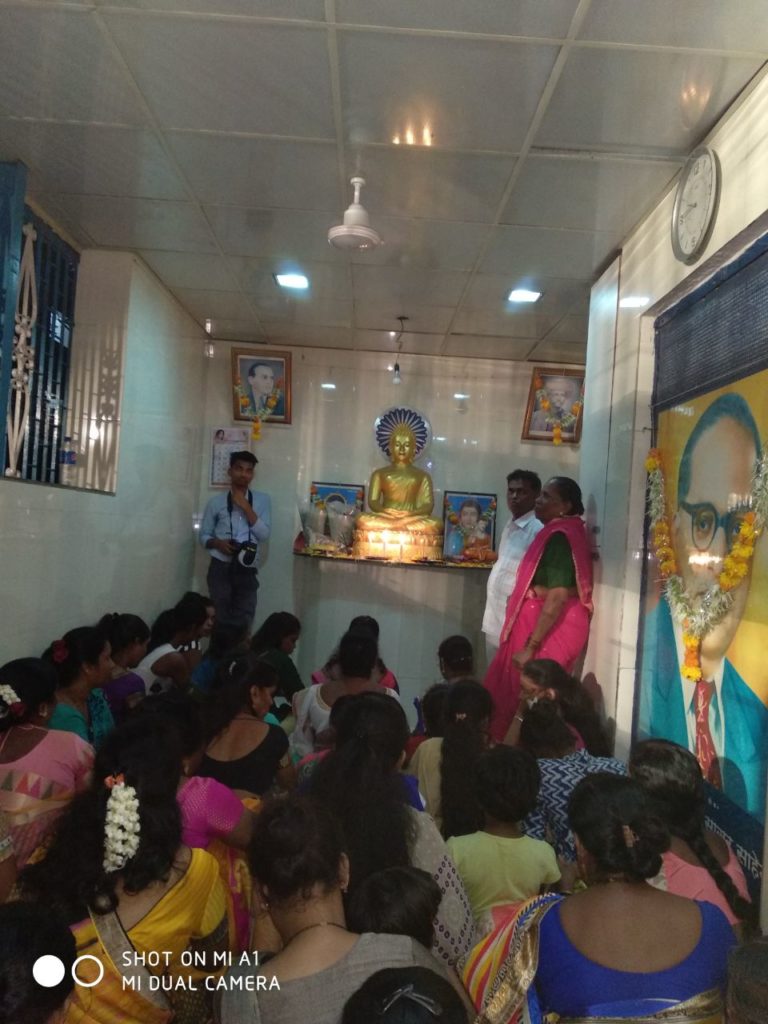Scholars are hesitant to make unqualified claims about the historical facts of the Buddha’s life. Most people accept that the Buddha lived, taught, and founded a monastic order during the Mahajanapada era during the reign of Bimbisara (c. 558 – c. 491 BCE, or c. 400 BCE), the ruler of the Magadha empire, and died during the early years of the reign of Ajatasatru, who was the successor of Bimbisara, thus making him a younger contemporary of Mahavira, the Jain tirthankar. Apart from the Vedic Brahmins, the Buddha’s lifetime coincided with the flourishing of influential Śramaṇa schools of thought like Ājīvika, Cārvāka, Jainism, and Ajñana. Brahmajala Sutta records sixty-two such schools of thought. It was also the age of influential thinkers like Mahavira (referred to as ‘Nigantha Nataputta’ in Pali Canon), Pūraṇa Kassapa, Makkhali Gosāla, Ajita Kesakambalī, Pakudha Kaccāyana, and Sañjaya Belaṭṭhaputta, as recorded in Samaññaphala Sutta, whose viewpoints the Buddha most certainly must have been acquainted with. Indeed, Sariputta and Moggallāna, two of the foremost disciples of the Buddha, were formerly the foremost disciples of Sañjaya Belaṭṭhaputta, the skeptic and the Pali canon frequently depicts Buddha engaging in debate with the adherents of rival schools of thought. There is also philological evidence to suggest that the two masters, Alara Kalama and Uddaka Ramaputta, were indeed historical figures and they most probably taught Buddha two different forms of meditative techniques. Thus, Buddha was just one of the many śramaṇa philosophers of that time. In an era where holiness of person was judged by their level of asceticism,Buddha was a reformist within the śramaṇa movement, rather than a reactionary against Vedic Brahminism. While the general sequence of “birth, maturity, renunciation, search, awakening and liberation, teaching, death” is widely accepted,there is less consensus on the veracity of many details contained in traditional biographies.
The times of Gautama’s birth and death are uncertain. Most historians in the early 20th century dated his lifetime as circa 563 BCE to 483 BCE.More recently his death is dated later, between 411 and 400 BCE, while at a symposium on this question held in 1988,the majority of those who presented definite opinions gave dates within 20 years either side of 400 BCE for the Buddha’s death.These alternative chronologies, however, have not been accepted by all historians.
k
The evidence of the early texts suggests that Siddhārtha Gautama was born into the Shakya clan, a community that was on the periphery, both geographically and culturally, of the eastern Indian subcontinent in the 5th century BCE. It was either a small republic, or an oligarchy, and his father was an elected chieftain, or oligarch. According to the Buddhist tradition, Gautama was born in Lumbini, now in modern-day Nepal, and raised in the Shakya capital of Kapilvastu, which may have been either in what is present day Tilaurakot, Nepal or Piprahwa, India. He obtained his enlightenment in Bodh Gaya, gave his first sermon in Sarnath, and died in Kushinagar.
No written records about Gautama were found from his lifetime or some centuries thereafter. One Edict of Asoka, who reigned from circa 269 BCE to 232 BCE, commemorates the Emperor’s pilgrimage to the Buddha’s birthplace in Lumbini. Another one of his edicts mentions the titles of several Dhamma texts, establishing the existence of a written Buddhist tradition at least by the time of the Maurya era. These texts may be the precursor of the Pāli Canon. The oldest surviving Buddhist manuscripts are the Gandhāran Buddhist texts, reported to have been found in or around Haḍḍa near Jalalabad in eastern Afghanistan and now preserved in the British Library. They are written in the Gāndhārī language using the Kharosthi script on twenty-seven birch bark manuscripts and date from the first century BCE to the third century CE.
On the basis of philological evidence, Indologist and Pali expert Oskar von Hinüber says that some of the Pali suttas have retained very archaic place-names, syntax, and historical data from close to the Buddha’s lifetime, including the Mahāparinibbāṇa Sutta which contains a detailed account of the Buddha’s final days. Hinüber proposes a composition date of no later than 350–320 BCE for this text, which would allow for a “true historical memory” of the events approximately 60 years prior if the Short Chronology for the Buddha’s lifetime is accepted (but also reminds that such a text was originally intended more as hagiography than as an exact historical record of events).
Traditional biographies
Buddha by Otgonbayar Ershuu
Biographical sources
The sources for the life of Siddhārtha Gautama are a variety of different, and sometimes conflicting, traditional biographies. These include the Buddhacarita, Lalitavistara Sūtra, Mahāvastu, and the Nidānakathā.Of these, the Buddhacarita is the earliest full biography, an epic poem written by the poet Aśvaghoṣa in the first century CE. The Lalitavistara Sūtra is the next oldest biography, a Mahāyāna/Sarvāstivāda biography dating to the 3rd century CE. The Mahāvastu from the Mahāsāṃghika Lokottaravāda tradition is another major biography, composed incrementally until perhaps the 4th century CE.The Dharmaguptaka biography of the Buddha is the most exhaustive, and is entitled the Abhiniṣkramaṇa Sūtra, and various Chinese translations of this date between the 3rd and 6th century CE. The Nidānakathā is from the Theravada tradition in Sri Lanka and was composed in the 5th century by Buddhaghoṣa.
From canonical sources come the Jataka tales, the Mahapadana Sutta and the Achariyabhuta Sutta (MN 123), which include selective accounts that may be older, but are not full biographies. The Jātakas retell previous lives of Gautama as a bodhisattva, and the first collection of these can be dated among the earliest Buddhist texts.The Mahāpadāna Sutta and Achariyabhuta Sutta both recount miraculous events surrounding Gautama’s birth, such as the bodhisattva’s descent from the Tuṣita Heaven into his mother’s womb.
Nature of traditional depictions
Māyā miraculously giving birth to Siddhārtha. Sanskrit, palm-leaf manuscript. Nālandā, Bihar, India. Pāla period
In the earliest Buddhist texts, the nikāyas and āgamas, the Buddha is not depicted as possessing omniscience (sabbaññu)nor is he depicted as being an eternal transcendent (lokottara) being. According to Bhikkhu Analayo, ideas of the Buddha’s omniscience (along with an increasing tendency to deify him and his biography) are found only later, in the Mahayana sutras and later Pali commentaries or texts such as the Mahāvastu. In the Sandaka Sutta, the Buddha’s disciple Ananda outlines an argument against the claims of teachers who say they are all knowing while in the Tevijjavacchagotta Sutta the Buddha himself states that he has never made a claim to being omniscient, instead he claimed to have the “higher knowledges” (abhijñā).The earliest biographical material from the Pali Nikayas focuses on the Buddha’s life as a śramaṇa, his search for enlightenment under various teachers such as Alara Kalama and his forty-five-year career as a teacher.
Traditional biographies of Gautama generally include numerous miracles, omens, and supernatural events. The character of the Buddha in these traditional biographies is often that of a fully transcendent (Skt. lokottara) and perfected being who is unencumbered by the mundane world. In the Mahāvastu, over the course of many lives, Gautama is said to have developed supramundane abilities including: a painless birth conceived without intercourse; no need for sleep, food, medicine, or bathing, although engaging in such “in conformity with the world”; omniscience, and the ability to “suppress karma”. Nevertheless, some of the more ordinary details of his life have been gathered from these traditional sources. In modern times there has been an attempt to form a secular understanding of Siddhārtha Gautama’s life by omitting the traditional supernatural elements of his early biographies.
Andrew Skilton writes that the Buddha was never historically regarded by Buddhist traditions as being merely human:
It is important to stress that, despite modern Theravada teachings to the contrary (often a sop to skeptical Western pupils), he was never seen as being merely human. For instance, he is often described as having the thirty-two major and eighty minor marks or signs of a mahāpuruṣa, “superman”; the Buddha himself denied that he was either a man or a god; and in the Mahāparinibbāna Sutta he states that he could live for an aeon were he asked to do so.
The ancient Indians were generally unconcerned with chronologies, being more focused on philosophy. Buddhist texts reflect this tendency, providing a clearer picture of what Gautama may have taught than of the dates of the events in his life. These texts contain descriptions of the culture and daily life of ancient India which can be corroborated from the Jain scriptures, and make the Buddha’s time the earliest period in Indian history for which significant accounts exist. British author Karen Armstrong writes that although there is very little information that can be considered historically sound, we can be reasonably confident that Siddhārtha Gautama did exist as a historical figure.Michael Carrithers goes a bit further by stating that the most general outline of “birth, maturity, renunciation, search, awakening and liberation, teaching, death” must be true.
Biography
Conception and birth
Maya’s dream of the Birth of Gautama Siddharta
Birthplace of Gautama Buddha in Lumbini, Nepal





